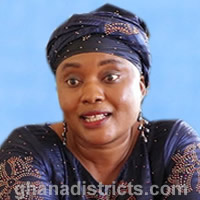Sanitation and Water
Solid Waste Management
Out of 155 communities within the District, a sample of 120 communities were visited for the household interviews. The total amount of waste generated by the District is 1600 tonnes per day constituting an average of 0.13kg/house/day. Most of the solid waste are generated in market places, lorry parks and schools, residential and eating premises. Solid waste generated at market place is 54% followed by residential with 33%. Organic waste forms over 70% composition and plastics forms 25% while paper, glass, wood, etc. forms 5%.
The 2010 PHC data on solid waste disposal shows that about 41.3 percent of households burn their solid waste. The use of public dump (open space) was 25.1 percent of households while 16.5 percent dispose of their waste into public dump (container). Nearly seven percent (6.9%) dump their waste indiscriminately and only 5 percent of households have their solid waste collected.
Liquid Waste Management
The District Assembly undertakes waste collection through the collaboration of private company, Zoomlion, within terms of contract agreement. The private company provides 60% of logistics while the Assembly provides the rest of the execution of the task.
Waste collected is transported by truck tippers, roller-on and skip loaders to the landfill site. Ada Foah, Big Ada and Kasseh generate about 45% of total waste generated in the District. However, the coverage of waste collected in these towns is only 10% - 20% while the average coverage of collection in the district is 12.5%. The estimated coverage of the entire district is 173.07km² and average total return-travel-time from waste generation center to final disposal site is 2.5 hours.
The landfill site is treated with disinfectants and incineration. Others are ramped with bulldozers and buried with porous soil.
The Assembly in collaboration with an NGO called Global Communities is implementing a sanitation module called Community Led Total Sanitation (CLTS) which aims at helping individuals to have their own toilets using local materials and also educating them to stop the practice of Open Defecation. The programme begun in 2016 with 7 communities in Phase 1 with 94 toilets completed and all 7 communities been declared Open Defecation Free (ODF). The Phase 2 had 18 communities benefitting with all of them been declared ODF and 76 toilets constructed. Currently they are implementing Phase 3 in 12 communities and 54 toilets have been completed so far.
Water Situation
The water situation in the district is fairly good. The major towns Big Ada and Ada Foah have been connected to the Ghana Water Company Limited main pipes whiles the smaller communities are benefitting from the 3 DWSS (District Water Supply System) with the neighbouring Assemblies Ada West and South Tongu. The detailed sources of water are below:
Natural and Man – Made Disasters
The location of the district i.e. laying in between two giant water bodies the Volta River and the Gulf of Guinea exposes the district to flooding during high tides and also during rainy seasons. Other natural disasters like bush fires and earth quakes are not usually recorded in the district.
Natural Resource Utilisation
The district is endowed with salt deposits, sand for building, forest and river and sea. The salt deposits are located on the southern part of the district in communities such as Aminapa, Medie and Luhuor. There are a number of companies and individuals mining this resource and it provides employment to the youth and revenue to the Assembly.
The communities that have sand deposits are Hwakpo, Agorkpo and Atortorkope and these mined for construction activities within the district and outside. Due to our unique location the district is endowed with beautiful river fronts and beaches on the sea shores. A lot of hospitality companies have sprung up especially along the river front employs a lot of the youth. The northern of the district has forest with the major trees been Nim trees and it also have savannah grassland which provides grazing land for livestock.
Date Created : 1/28/2019 3:13:46 AM






 facebook
facebook twitter
twitter Youtube
Youtube TOLL FREE 0800 430 430
TOLL FREE 0800 430 430 +233 593 831 280
+233 593 831 280 GPS: GE-231-4383
GPS: GE-231-4383 info@ghanadistricts.com
info@ghanadistricts.com Box GP1044, Accra, Ghana
Box GP1044, Accra, Ghana